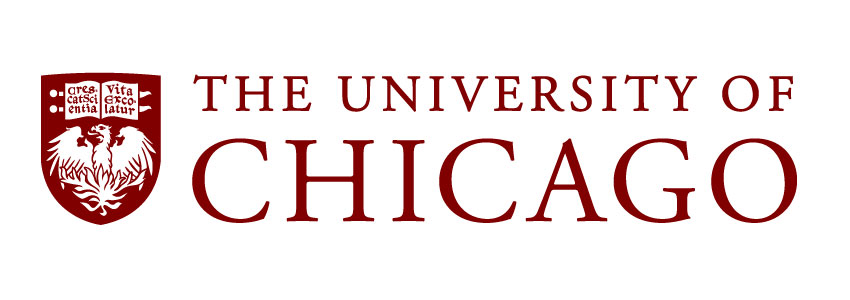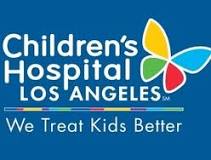Abatacept as GVHD Prophylaxis Phase 2
| Status: | Active, not recruiting |
|---|---|
| Conditions: | Cancer, Orthopedic, Hematology |
| Therapuetic Areas: | Hematology, Oncology, Orthopedics / Podiatry |
| Healthy: | No |
| Age Range: | 6 - Any |
| Updated: | 1/23/2019 |
| Start Date: | February 2013 |
| End Date: | February 2023 |
Abatacept Combined With a Calcineurin Inhibitor and Methotrexate for Graft Versus Host Disease Prophylaxis: A Randomized Controlled Trial
This is a phase II multi-center, randomized, double blind, placebo-controlled trial.
The investigators are doing this study to see if a new drug, abatacept, can be used together
with a calcineurin inhibitor (cyclosporine or tacrolimus) and methotrexate to provide better
protection against Acute Graft versus Host Disease (aGvHD) without causing more infections.
Funding Source - FDA OOPD
The investigators are doing this study to see if a new drug, abatacept, can be used together
with a calcineurin inhibitor (cyclosporine or tacrolimus) and methotrexate to provide better
protection against Acute Graft versus Host Disease (aGvHD) without causing more infections.
Funding Source - FDA OOPD
Acute Graft versus Host Disease (aGvHD) is the most deadly complication facing children who
have allogeneic hematopoietic stem cell transplant (HSCT). aGvHD occurs, in large part,
because the T cells in the bone marrow graft do not "accept" the presence of the transplant
recipient's cells. They mount a severe, debilitating, and often deadly attack against the
recipient, striking the skin, the liver, and the gastrointestinal track, most prominently.
For patients receiving bone marrow from an unrelated donor, the rate of aGvHD can reach as
high as 80%, with up to half of patients dying from this complication. Given the lack of
success in preventing aGvHD with current therapies, novel therapies to prevent this disease
are desperately needed.
Hypothesis and Aims: This trial is being conducted as a step toward testing the long-term
hypothesis that the costimulation blockade agent abatacept can be added to a standard acute
graft-versus-host disease (aGvHD) prophylaxis regimen (which includes a calcineurin inhibitor
(CNI) and methotrexate), to improve disease-free survival after unrelated hematopoietic stem
cell transplantation (HSCT) for patients with hematologic malignancies. As a phase II study,
the overall aim of this trial is to make a preliminary assessment of abatacept's clinical
safety and efficacy using short-term outcomes. Thus, this trial is designed to test two
hypotheses:
1. A primary hypothesis that the addition of abatacept to calcineurin inhibition +
methotrexate can decrease the incidence of early-onset (before day 100 post-transplant)
severe (grades 3-4) aGvHD.
2. A secondary hypothesis that its addition will not hinder post-transplant reconstitution
of protective immunity against latent viruses.
To test these two hypotheses, this study will have the following Specific Aims.
Specific Aim #1: To conduct a multicenter Phase II, randomized, double-blind, placebo
controlled trial to assess the impact of abatacept on the incidence of aGVHD and its biology.
To make this assessment patients will be randomized either to standard aGVHD prophylaxis with
a CNI, methotrexate and placebo or to investigational prophylaxis with a CNI, methotrexate
and abatacept. Correlative immunology studies will be performed to elucidate abatacept's
effects on the graft-versus-host response.
Specific Aim #2: To assess the impact of abatacept on post-transplant reconstitution of
protective immunity against viruses. This will involve monitoring the longitudinal recovery
of lymphocyte subsets and virus-specific immunity, using tetramer analysis and viral
stimulation assays. It will also involve monitoring viral infection and disease.
Background and Rationale:
The Unmet Need: Allogeneic HSCT is an effective treatment for aggressive leukemias and other
hematological malignancies, often representing the only option for cure. However, some of its
benefit, especially in the case of unrelated donor transplantation, is off-set by a high rate
of transplant-related mortality (approximately 30% of recipients of unrelated donor
transplantation will die of transplant-related complications) stemming largely from severe
aGVHD and infection. 1-7 aGvHD occurs when reconstituting donor T cells8 become activated
against recipient tissues.9 This activation can result in severe immune-mediated tissue
damage to the host, with the skin, liver and GI tract being the most common targets.
aGvHD-mediated damage to these vital organs can result in significant morbidity, and in
death. While whole-scale T cell depletion of the allograft can successfully reduce rates of
aGvHD, patients receiving T cell-depleted grafts exhibit profound defects in protective
immunity, and often die of infection or relapse of their primary disease.10-12 This has
created an unmet clinical need for a strategy that more effectively prevents severe aGvHD
while preserving the transplant recipient's protective immune response.
Targeting T cell costimulation to prevent aGvHD: The immune activation observed in aGvHD
bears close resemblance to the immune activation that occurs during both organ rejection and
autoimmunity. Studies in these diseases have led to the development of a new class of agents,
called 'costimulation blockade' reagents, which specifically target activated T cells and
block their ability to become fully activated effector cells. 13 One of the most studied of
the costimulatory pathways is the CD28:CD80/86 receptor:coreceptor interaction.14
Considerable work on this pathway has been accomplished, and has demonstrated the efficacy of
inhibition of CD28:CD80/86 signaling in inhibiting T cell-mediated immune activation. The
first CD80/86-directed costimulation blockade agent, CTLA4Ig, or 'abatacept,' is approved for
use in rheumatoid arthritis, both in adults and in children older than 6 years.15-18 The
experience with abatacept from 3 large randomized, placebo-controlled clinical trials, two in
adults with rheumatoid arthritis and one in children with juvenile idiopathic arthritis (ages
6 and older) indicates that it is a safe agent.19-21 In these three trials, abatacept was
dosed at 10 mg/kg and was administered IV on day 1, 15, 29 (one trial used day 30) and then
every 28 days for a total of 6 to 10 months of total treatment. Collectively, most patients
also received weekly, oral, low-dose methotrexate and low dose prednisone concurrently. In
these trials, abatacept was well tolerated. Acutely, infusional reactions were rare and mild
and occurred at rates that did not differ significantly from those with placebo. Abatacept
was not associated with any hematologic, renal, cardiac, pulmonary, hepatic or neurologic
abnormalities. Similarly, the rates of both total and serious adverse events were low, and
did not differ from those with placebo. Abatacept has been shown to be safe, even in extended
open label trials,22,23 not associated with excessive PTLD or other malignancies. 22-25
However, chronically-treated patients did experience a slightly higher risk of infections.
22,24,25 Phase III studies of a second-generation, higher avidity abatacept analog,
belatacept (which is identical to abatacept except for two amino acid substitutions) have
demonstrated efficacy in preventing renal transplant rejection. 26,27 Patients who received
10mg/kg of belatacept on days 1, 5, 14, 28, and every 28 days thereafter demonstrated
improved renal function compared to those receiving cyclosporine, and similar graft
survival.26,27 These results have led to the FDA approval of belatacept for a renal
transplant indication. While overall rates of patient death, infection and serious infection
in patients receiving belatacept were not different than in those receiving traditional
immunosuppression,26,28 belatacept was associated with a statistically-significant increased
rate of EBV-associated PTLD compared to cyclosporine-based immunosuppression (especially in
patients that were EBV sero-negative prior to transplant).26,28 This observation raises an
important question about the negative impact that belatacept and related compounds may have
on protective immune responses to latent viruses. Rates of PTLD were much lower in EBV
sero-positive patients,26,28 suggesting that any defect in protective immunity induced by
belatacept may be more significant in the setting of primary EBV infection than during EBV
reactivation. These observations underscore the critical importance of evaluating novel
immunosuppressive strategies for their impact both on alloreactivity and on the
post-transplant protective immune response.
Prior to our work, abatacept had not been tested for its ability to prevent GvHD in BMT
patients. However, there was considerable evidence from murine models to suggest that it
might be an active compound against the immune activation that occurs during GvHD.29-33 In
addition, our research group developed a non-human primate model of GvHD 34 and used this
model to demonstrate that an abatacept-containing immunosuppressive regimen could
significantly protect against the development of primate GvHD. 34 These results, along with
the clinical evidence for efficacy of abatacept and belatacept in both autoimmunity and solid
organ transplantation provided the rationale for the development of a first-in-disease
feasibility trial of abatacept for GvHD prevention (Clinical Trials.org #NCT01012492). This
trial, which has now completed enrollment, has documented encouraging early results with
respect to both the safety and efficacy of abatacept for GvHD prevention (Kean et al., ASH
2011). These results have led to the creation of the current Phase II clinical trial of
abatacept for prevention of severe aGvHD.
Research Design and Methods Study Design: This will be a phase II, multi-center, randomized,
double-blind, placebo-controlled trial.
Study Population, Subject Recruitment and Selection: Patients will be recruited from the
Children's Healthcare of Atlanta Pediatric Blood and Marrow Transplant Program, the Emory
University Adult Blood and Marrow Transplant Program, the University of Florida Adult Blood
and Marrow Transplant Program, the Seattle Cancer Consortium including University of
Washington, Seattle Children's Hospital, Seattle Cancer Care Alliance and from participating
centers in the Pediatric Blood and Marrow Transplant Consortium (PBMTC). A total of 40
randomized 7/8 HLA matched patients and 140 8/8 HLA matched patients will be enrolled on this
study. Patients who are enrolled, but determined to be Assignment Failures before receiving
study drug/placebo will be replaced. 7/8 HLA matched patients enrolled prior to Protocol
Amendment 4 and who were randomized to the study drug/placebo arm are not counted in either
group of 40 or 140.
have allogeneic hematopoietic stem cell transplant (HSCT). aGvHD occurs, in large part,
because the T cells in the bone marrow graft do not "accept" the presence of the transplant
recipient's cells. They mount a severe, debilitating, and often deadly attack against the
recipient, striking the skin, the liver, and the gastrointestinal track, most prominently.
For patients receiving bone marrow from an unrelated donor, the rate of aGvHD can reach as
high as 80%, with up to half of patients dying from this complication. Given the lack of
success in preventing aGvHD with current therapies, novel therapies to prevent this disease
are desperately needed.
Hypothesis and Aims: This trial is being conducted as a step toward testing the long-term
hypothesis that the costimulation blockade agent abatacept can be added to a standard acute
graft-versus-host disease (aGvHD) prophylaxis regimen (which includes a calcineurin inhibitor
(CNI) and methotrexate), to improve disease-free survival after unrelated hematopoietic stem
cell transplantation (HSCT) for patients with hematologic malignancies. As a phase II study,
the overall aim of this trial is to make a preliminary assessment of abatacept's clinical
safety and efficacy using short-term outcomes. Thus, this trial is designed to test two
hypotheses:
1. A primary hypothesis that the addition of abatacept to calcineurin inhibition +
methotrexate can decrease the incidence of early-onset (before day 100 post-transplant)
severe (grades 3-4) aGvHD.
2. A secondary hypothesis that its addition will not hinder post-transplant reconstitution
of protective immunity against latent viruses.
To test these two hypotheses, this study will have the following Specific Aims.
Specific Aim #1: To conduct a multicenter Phase II, randomized, double-blind, placebo
controlled trial to assess the impact of abatacept on the incidence of aGVHD and its biology.
To make this assessment patients will be randomized either to standard aGVHD prophylaxis with
a CNI, methotrexate and placebo or to investigational prophylaxis with a CNI, methotrexate
and abatacept. Correlative immunology studies will be performed to elucidate abatacept's
effects on the graft-versus-host response.
Specific Aim #2: To assess the impact of abatacept on post-transplant reconstitution of
protective immunity against viruses. This will involve monitoring the longitudinal recovery
of lymphocyte subsets and virus-specific immunity, using tetramer analysis and viral
stimulation assays. It will also involve monitoring viral infection and disease.
Background and Rationale:
The Unmet Need: Allogeneic HSCT is an effective treatment for aggressive leukemias and other
hematological malignancies, often representing the only option for cure. However, some of its
benefit, especially in the case of unrelated donor transplantation, is off-set by a high rate
of transplant-related mortality (approximately 30% of recipients of unrelated donor
transplantation will die of transplant-related complications) stemming largely from severe
aGVHD and infection. 1-7 aGvHD occurs when reconstituting donor T cells8 become activated
against recipient tissues.9 This activation can result in severe immune-mediated tissue
damage to the host, with the skin, liver and GI tract being the most common targets.
aGvHD-mediated damage to these vital organs can result in significant morbidity, and in
death. While whole-scale T cell depletion of the allograft can successfully reduce rates of
aGvHD, patients receiving T cell-depleted grafts exhibit profound defects in protective
immunity, and often die of infection or relapse of their primary disease.10-12 This has
created an unmet clinical need for a strategy that more effectively prevents severe aGvHD
while preserving the transplant recipient's protective immune response.
Targeting T cell costimulation to prevent aGvHD: The immune activation observed in aGvHD
bears close resemblance to the immune activation that occurs during both organ rejection and
autoimmunity. Studies in these diseases have led to the development of a new class of agents,
called 'costimulation blockade' reagents, which specifically target activated T cells and
block their ability to become fully activated effector cells. 13 One of the most studied of
the costimulatory pathways is the CD28:CD80/86 receptor:coreceptor interaction.14
Considerable work on this pathway has been accomplished, and has demonstrated the efficacy of
inhibition of CD28:CD80/86 signaling in inhibiting T cell-mediated immune activation. The
first CD80/86-directed costimulation blockade agent, CTLA4Ig, or 'abatacept,' is approved for
use in rheumatoid arthritis, both in adults and in children older than 6 years.15-18 The
experience with abatacept from 3 large randomized, placebo-controlled clinical trials, two in
adults with rheumatoid arthritis and one in children with juvenile idiopathic arthritis (ages
6 and older) indicates that it is a safe agent.19-21 In these three trials, abatacept was
dosed at 10 mg/kg and was administered IV on day 1, 15, 29 (one trial used day 30) and then
every 28 days for a total of 6 to 10 months of total treatment. Collectively, most patients
also received weekly, oral, low-dose methotrexate and low dose prednisone concurrently. In
these trials, abatacept was well tolerated. Acutely, infusional reactions were rare and mild
and occurred at rates that did not differ significantly from those with placebo. Abatacept
was not associated with any hematologic, renal, cardiac, pulmonary, hepatic or neurologic
abnormalities. Similarly, the rates of both total and serious adverse events were low, and
did not differ from those with placebo. Abatacept has been shown to be safe, even in extended
open label trials,22,23 not associated with excessive PTLD or other malignancies. 22-25
However, chronically-treated patients did experience a slightly higher risk of infections.
22,24,25 Phase III studies of a second-generation, higher avidity abatacept analog,
belatacept (which is identical to abatacept except for two amino acid substitutions) have
demonstrated efficacy in preventing renal transplant rejection. 26,27 Patients who received
10mg/kg of belatacept on days 1, 5, 14, 28, and every 28 days thereafter demonstrated
improved renal function compared to those receiving cyclosporine, and similar graft
survival.26,27 These results have led to the FDA approval of belatacept for a renal
transplant indication. While overall rates of patient death, infection and serious infection
in patients receiving belatacept were not different than in those receiving traditional
immunosuppression,26,28 belatacept was associated with a statistically-significant increased
rate of EBV-associated PTLD compared to cyclosporine-based immunosuppression (especially in
patients that were EBV sero-negative prior to transplant).26,28 This observation raises an
important question about the negative impact that belatacept and related compounds may have
on protective immune responses to latent viruses. Rates of PTLD were much lower in EBV
sero-positive patients,26,28 suggesting that any defect in protective immunity induced by
belatacept may be more significant in the setting of primary EBV infection than during EBV
reactivation. These observations underscore the critical importance of evaluating novel
immunosuppressive strategies for their impact both on alloreactivity and on the
post-transplant protective immune response.
Prior to our work, abatacept had not been tested for its ability to prevent GvHD in BMT
patients. However, there was considerable evidence from murine models to suggest that it
might be an active compound against the immune activation that occurs during GvHD.29-33 In
addition, our research group developed a non-human primate model of GvHD 34 and used this
model to demonstrate that an abatacept-containing immunosuppressive regimen could
significantly protect against the development of primate GvHD. 34 These results, along with
the clinical evidence for efficacy of abatacept and belatacept in both autoimmunity and solid
organ transplantation provided the rationale for the development of a first-in-disease
feasibility trial of abatacept for GvHD prevention (Clinical Trials.org #NCT01012492). This
trial, which has now completed enrollment, has documented encouraging early results with
respect to both the safety and efficacy of abatacept for GvHD prevention (Kean et al., ASH
2011). These results have led to the creation of the current Phase II clinical trial of
abatacept for prevention of severe aGvHD.
Research Design and Methods Study Design: This will be a phase II, multi-center, randomized,
double-blind, placebo-controlled trial.
Study Population, Subject Recruitment and Selection: Patients will be recruited from the
Children's Healthcare of Atlanta Pediatric Blood and Marrow Transplant Program, the Emory
University Adult Blood and Marrow Transplant Program, the University of Florida Adult Blood
and Marrow Transplant Program, the Seattle Cancer Consortium including University of
Washington, Seattle Children's Hospital, Seattle Cancer Care Alliance and from participating
centers in the Pediatric Blood and Marrow Transplant Consortium (PBMTC). A total of 40
randomized 7/8 HLA matched patients and 140 8/8 HLA matched patients will be enrolled on this
study. Patients who are enrolled, but determined to be Assignment Failures before receiving
study drug/placebo will be replaced. 7/8 HLA matched patients enrolled prior to Protocol
Amendment 4 and who were randomized to the study drug/placebo arm are not counted in either
group of 40 or 140.
Inclusion Criteria:
1. Must be at least 6 years old and weigh 20 kg.
2. Must have a willing unrelated adult donor (bone marrow or peripheral blood). Donors
may have a single mismatch (i.e. be a 7/8) and this mismatch may be at the allele or
antigen level; however, donors with allele level disparity should be given preference
over those with antigen level disparity. The use of mismatched donors in which
disparity is only in the host versus graft direction (because of recipient
homozygosity) is discouraged because of the potentially heightened risk for graft
rejection. Centers may perform extended typing (e.g. DQB1 and DPB1) according to
institutional practices and use these results in selecting donors; however, it is
recommended that this extending typing be used only to select between donors who are
equally well matched with the recipient at the A, B, C and DRB1.
3. All patients and/or their parents or legal guardians must sign a written informed
consent. Assent, when appropriate, will be obtained according to institutional
guidelines.
4. Must have a high risk hematologic malignancy as defined below:
1. Acute myeloid leukemia (AML).
2. Myelodysplastic syndrome
(i) Adult patients (≥21 years) must meet criteria for intermediate, high or very
high-risk disease based on the World Health Organization classification based
prognostic scoring system.
Intermediate risk (2 points), high risk (3-4 points), very high risk (4-5 points)
- RA = refractory anemia, RARS = refractory anemia with ringed sideroblasts, RCMD =
refractory cytopenia with multilineage dysplasia, RCMD-RS = refractory cytopenia with
multilineage dysplasia and ringed sideroblasts, RAEB-1 = refractory anemia with excess
of blasts-1 (5-9% blasts), RAEB-2 = refractory anemia with excess of blasts-2 (10-19%
blasts).
- *Karyotype: Good = normal, -Y, del(5q), del(20q), Poor = complex (≥ 3 abnormalities),
chromosome 7 anomalies, Intermediate = other abnormalities.
- *RBC transfusion requirement = having ≥ 1 RBC transfusion every 8 weeks over a
4-month period.
(ii) Pediatric patients with MDS, regardless of subtype, will be eligible.
(c) Acute lymphoblastic leukemia (ALL). (i) Given the poor prognosis of adults (≥21 years)
with ALL, adults in 1st or greater complete remission will be eligible.. CR is defined as
an M1 marrow (<5% blasts), no evidence of extramedullary disease, and an absolute
neutrophil count ≥ 1.0 x 109/L. Complete remissions without platelet recovery (CRp) will be
considered remissions (ii) Given the generally good prognosis of children (<21 years) with
ALL, they will have to meet one of the criteria listed below. Additionally, children who
are enrolled on a COG ALL trial for newly diagnosed or relapsed disease will have to meet
the criteria for BMT outlined in that trial. CR is defined as an M1 marrow (<5% blasts), no
evidence of extramedullary disease, and an absolute neutrophil count ≥ 1.0 x 109/L.
Complete remissions without platelet recovery (CRp) will be considered remissions.
1. In 1st complete remission with a very high risk for relapse.
1. Haplodiploidy (<44 chromosomes)
2. >1% residual marrow blasts by flow cytometry at the end of induction.
3. >0.01% residual marrow blasts by flow cytometry at the end of consolidation.
4. Early T-Cell Precursor (ETP) phenotype
2. In 2nd complete remission with B-lineage disease after a marrow relapse occurring less
than 36 months from diagnosis.
3. In 2nd complete remission with T-lineage disease or Ph+ disease after a marrow relapse
occurring at any time.
4. In a 2nd complete remission with T-lineage disease after an extra-medullary relapse
occurring less than 18 months from diagnosis.
5. In 3rd or greater complete remission after a marrow or extramedullary relapse
(d) Patients with acute undifferentiated, biphenotypic, or bilineal leukemia, which is
in 1st or greater complete remission (CR) or partial remission (PR). Cr will be
defined as an M1 marrow (<5% blasts), no evidence of extramedullary disease, and an
absolute neutrophil count ≥ 1.0 x 109/L. CR without platelet recovery (CRp) will be
considered complete remissions.) PR will be defined as an M2 marrow (5-19% blasts), no
evidence of extramedullary disease, and an absolute neutrophil count ≥ 1.0 x 109/L.).
(e) Chronic myelogenous leukemia (CML). (i) Chronic phase with resistance to tyrosine
kinase inhibitors. (ii) accelerated phase (development of cytogenetic abnormality in
addition to t(9:22), blood blast percentage ≥10, blood basophil percentage ≥20,
platelet count <100,000 X 109/L) (iii) blast crisis. (iv) 2nd or greater chronic
phase.
(f) Acute Lymphoblastic Lymphoma in 2nd or greater complete remission. Complete
remission includes confirmed complete response (CR) defined as the disappearance of
all evidence of disease from all sites for at least 4 weeks. Bone marrow and CSF must
be normal and any macroscopic nodules in any organs detectable on imaging techniques
should no longer be present. Imaging should include PET scanning. CR will also include
unconfirmed complete responses defined as a residual lymph node mass > 1.5 cm in
greatest transverse diameter that has regressed by > 75% in sum of the products of the
greatest perpendicular diameters (SPD), or any residual lesions in organs that have
decreased by > 75%, with a negative PET scan, negative bone marrow and CSF.
(g) Peripheral T cell lymphoma (PTCL).
(h) Chronic lymphocytic leukemia (CLL) (i) Newly diagnosed disease with 17p- (ii)
Disease beyond first CR that has been treated with a fludarabine containing regimen.
(i) Chronic myelomonocytic leukemia.
(j) Atypical (BCR-ABL negative) chronic myelogenous leukemia
(k) Hodgkin lymphoma that has recurred or progressed after an autologous BMT. Disease
must be chemosensitive; salvage chemotherapy must produce at least a partial response.
(l) Non-Hodgkin lymphomas that has recurred or progressed after an autologous BMT.
Exclusion Criteria:
1. Prior allogeneic HSCT.
2. The patient is enrolled on a COG trial that uses criteria for unrelated donor HSCT,
which conflict with our eligibility criteria.
3. The patient is enrolled on a COG trial that utilizes unrelated donor HSCT and requires
that patients be transplanted using an approach specified by the protocol that is in
conflict with the approach specified in this protocol.
4. Availability of a willing and suitable HLA identical related donor.
5. Uncontrolled viral, bacterial, fungal or protozoal infection at the time of study
enrollment.
6. HIV infection.
7. Serious psychiatric disease including schizophrenia, bipolar disorder and severe
depression.
8. Any patient with a known or suspected inherited predisposition to cancer should be
discussed with the study team prior to screening for eligibility.
1. Patients with a known inherited or constitutional predisposition to transplant
morbidities, including, but not limited to Fanconi Anemia, Dyskeratosis
Congenita, Shwachman-Diamond Syndrome and Down Syndrome will be excluded.
2. Patients with known inherited or constitutional predisposition to non-hematologic
cancers including, but not limited to Li-Fraumeni syndrome, BRCA1 and BRCA2
mutations will be excluded.
3. Patients with an inherited predisposition to leukemia or otherwise hematologic
malignancies that have not been associated with predisposition to transplant
morbidities or non-hematologic cancers will not be excluded.
9. Known inherited or constitutional predisposition to cancer including, but not limited
to Li-Fraumeni syndrome, Down syndrome and BRCA1 and BRCA2 mutations.
10. Incompletely treated active tuberculosis Infection.
11. Pregnancy (positive serum b-HCG) or breastfeeding.
12. Estimated GFR of < 50 mL/min/1.73m2.
13. Cardiac ejection fraction < 50.
14. bilirubin > 2 × upper limit of normal or ALT > 4 × upper limit of normal or unresolved
veno-occlusive disease.
15. Pulmonary disease with FVC, FEV1 or DLCO parameters <45% predicted (corrected for
hemoglobin) or requiring supplemental oxygen. Children who are developmentally unable
to perform pulmonary function testing will be assessed solely on their need for
supplemental oxygen.
16. Karnofsky performance score or Lansky Play-Performance Scale score <80
17. Presence of antibodies to a mismatched donor HLA antigen
We found this trial at
19
sites
500 S State St
Ann Arbor, Michigan 48109
Ann Arbor, Michigan 48109
(734) 764-1817
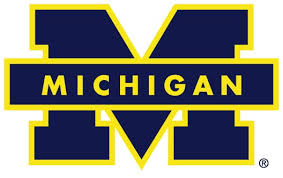
Principal Investigator: Sung Won Choi, MD
Phone: 734-232-8838
University of Michigan The University of Michigan was founded in 1817 as one of the...
Click here to add this to my saved trials
University of Chicago One of the world's premier academic and research institutions, the University of...
Click here to add this to my saved trials
Gainesville, Florida 32610
(352) 392-3261

Principal Investigator: Maxim Norkin, MD
Phone: 248-756-4524
University of Florida The University of Florida (UF) is a major, public, comprehensive, land-grant, research...
Click here to add this to my saved trials
Childrens Hospital Los Angeles Children's Hospital Los Angeles is a 501(c)(3) nonprofit hospital for pediatric...
Click here to add this to my saved trials
1211 Medical Center Dr
Nashville, Tennessee 37232
Nashville, Tennessee 37232
(615) 322-5000

Vanderbilt Univ Med Ctr Vanderbilt University Medical Center (VUMC) is a comprehensive healthcare facility dedicated...
Click here to add this to my saved trials
201 Presidents Circle
Salt Lake City, Utah 84108
Salt Lake City, Utah 84108
801) 581-7200
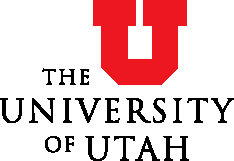
Principal Investigator: Michael Boyer, MD
Phone: 801-662-4700
University of Utah Research is a major component in the life of the U benefiting...
Click here to add this to my saved trials
825 Eastlake Ave E
Seattle, Washington 98109
Seattle, Washington 98109
(206) 288-7222

Principal Investigator: Leslie S Kean, MD,PhD
Phone: 206-884-1055
Seattle Cancer Care Alliance Seattle Cancer Care Alliance (SCCA) is a cancer treatment center that...
Click here to add this to my saved trials
Atlanta, Georgia 30322
Principal Investigator: Muna Qayed, MD
Phone: 404-785-0692
Click here to add this to my saved trials
Atlanta, Georgia 30322
Principal Investigator: Amelia Langston, MD
Phone: 404-785-0692
Click here to add this to my saved trials
13123 E 16th Ave
Aurora, Colorado 80045
Aurora, Colorado 80045
(720) 777-1234

Phone: 720-777-6892
Children's Hospital Colorado At Children's Hospital Colorado, we see more, treat more and heal more...
Click here to add this to my saved trials
450 Brookline Ave
Boston, Massachusetts 2215
Boston, Massachusetts 2215
617-632-3000

Principal Investigator: Christine Duncan, MD
Phone: 617-632-6255
Dana-Farber Cancer Institute Since it’s founding in 1947, Dana-Farber has been committed to providing adults...
Click here to add this to my saved trials
1000 Blythe Boulevard
Charlotte, North Carolina 28203
Charlotte, North Carolina 28203
Click here to add this to my saved trials
Click here to add this to my saved trials
Cincinnati, Ohio 45229
Principal Investigator: Michael Grimley, MD
Phone: 513-636-5917
Click here to add this to my saved trials
1319 Punahou St
Honolulu, Hawaii 96826
Honolulu, Hawaii 96826
(808) 983-6000

Kapiolani Medical Center for Women and Children Hawai‘i Pacific Health is an integrated health care...
Click here to add this to my saved trials
Click here to add this to my saved trials
Click here to add this to my saved trials
Click here to add this to my saved trials
111 Michigan Ave NW
Washington, District of Columbia
Washington, District of Columbia
(202) 476-5000
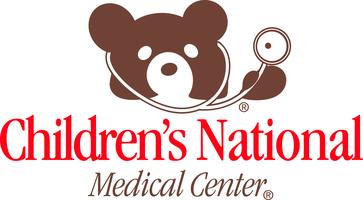
Principal Investigator: David A. Jacobsohn, MD
Phone: 202-476-6250
Childrens National Medical Center As the nation’s children’s hospital, the mission of Children’s National Medical...
Click here to add this to my saved trials
